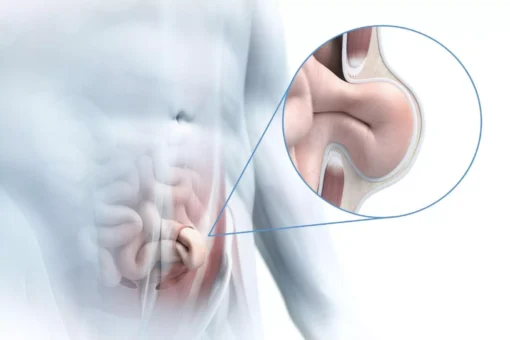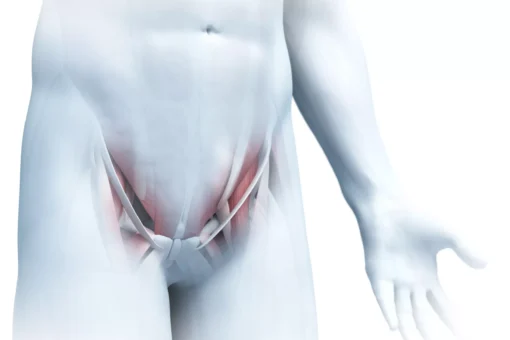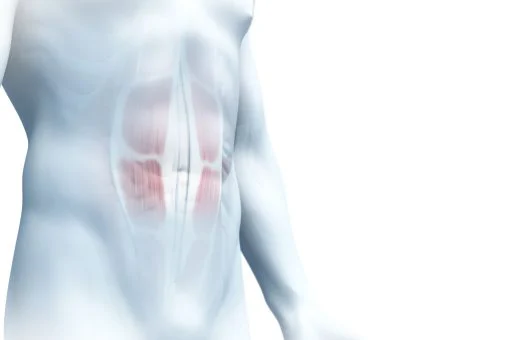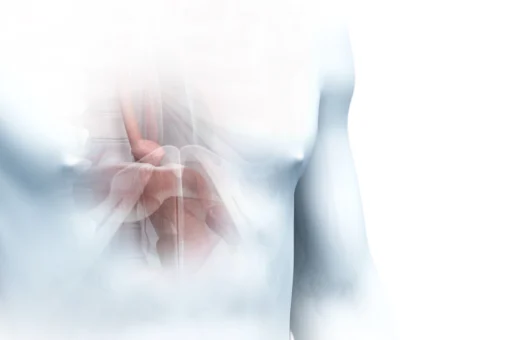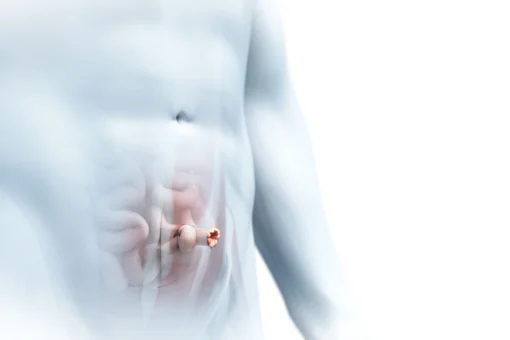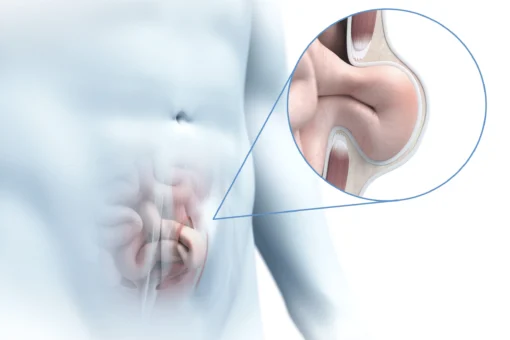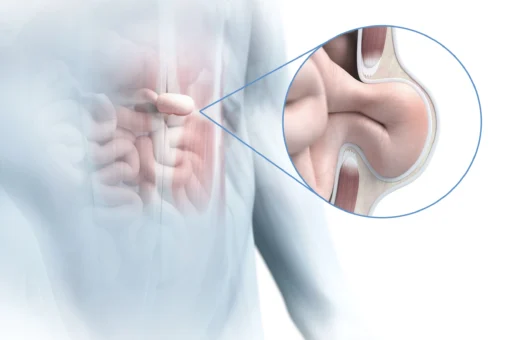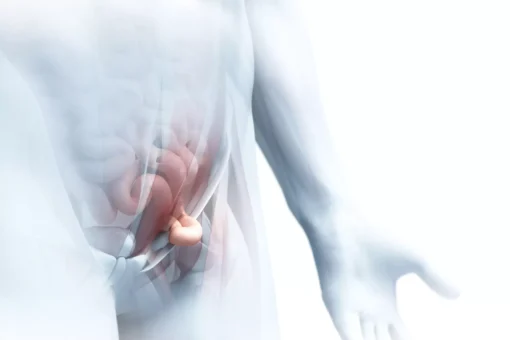The Sportsman’s groin
Content
Sportsman’s groin, also known as “soft groin”, often occurs in highly trained professional athletes and manifests itself in chronic, activity-related groin pain.
This is not a true hernia, but a kind of preform of a medial inguinal hernia. A weakness in the posterior wall of the inguinal canal leads to nerve compression under heavy physical strain, which triggers acute pain. When there is tension and pressure on the abdominal cavity (e.g. through jerky movements), the transversalis fascia bulges forward into the inguinal canal and presses on the surrounding nerve tracts, which triggers the typical stabbing pain. As a result, perineural fibrosis, a thickening of the connective tissue of the nerve fibre sheath, occurs at that location. In addition, the fascial instability of the posterior wall of the inguinal canal causes the inguinal canal to widen and the straight abdominal muscle at the end of the pubic bone to weaken. Bone marrow oedema often develops at the pubic bone due to the increased tension present because of the retraction of the straight abdominal muscle.
Sportsman’s groin is particularly common in sports with one-sided physical stress, repetitive, fast-changing or jerky movements and rapid changes of direction. These include football, rugby, soccer, handball, basketball, icehockey and hockey, but also tennis, hurdling and running. Especially kicking movements, where one foot is fixed to the ground and a rotational movement is performed from the hip, favour the occurrence of sportsman’s groins. Around 15 to 20% of athletes suffer from sportsman’s groin in the course of their career. In professional footballers, it is even almost 60% who develop groin complaints sooner or later. Sportsman’s groins often result in longer downtimes, which are fatal for the athlete’s career and his or her own team.
Men are far more likely to develop an athlete’s groin than women. In the narrower male pelvis, there are greater shear forces at the pubic symphysis resulting in greater instability than in a wider female pelvis.
As a preventive measure, targeted strength training of the trunk muscles and the adductors should be carried out.
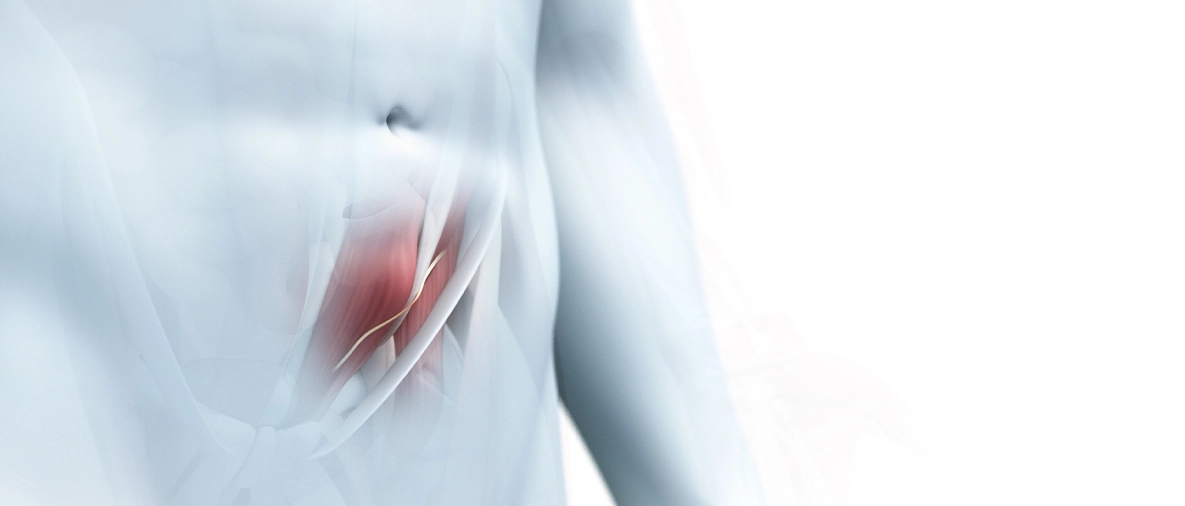
Symptoms of a sportsman's groin
The following symptoms can occur with a sportsman’s groin:
- Drawing, burning, stabbing or electrifying pain in the affected groin.
- Pain occurs mainly during physical exertion.
- The pain may radiate to the inner thigh and testicles.
- Feeling of pressure in the lower abdominal muscles
Similar symptoms can also occur with pelvic hernia (obturator hernia), which can also cause pain or numbness in the inner thigh. In pelvic hernia, parts of organs are pushed through the hip bone hole, which is normally closed by a fascia. This hernia occurs very rarely and is hardly noticeable on physical palpation, which is why it is usually overlooked by doctors for a long time.
Spermatic cord lipomas or lipomas in the inguinal canal are two other diagnoses that can cause similar signs to sportsman’s groin or a hernia. Lipomas are benign fat tumours caused by an excessive proliferation of fat cells in the subcutaneous fatty tissue. Being overweight is not a risk factor and it is often very slim patients who are affected. Lipomas are visible on ultrasound and can be easily removed surgically.
Treat the sportsman's groin
The diagnosis of a sportsman’s groin should ideally be made by a hernia specialist. The doctor will palpate the groin region for diagnosis to rule out a hernia. By means of an ultrasound examination, he can assess the condition and strength of the individual layers of connective tissue. Occasionally, X-rays or an MRI examination are also used.
With conservative treatment, a break from sport is often necessary as a first step. Anti-inflammatory medication can also be prescribed. Supportive treatment includes local infiltration, osteopathy, acupuncture, ACP treatment (autologous Conditioned Plasma, own blood therapy) and physiotherapy. If conservative treatment methods are unsuccessful, the athlete’s groin is treated by surgery. It should be taken into account that in rare cases, chronic pain syndrome can develop if the nerves are irritated for a long time. In this case, the pain only recedes very slowly even after successful groin stabilisation. To avoid this, you should consult an experienced surgeon after 6 weeks of unsuccessful treatment at the latest.
Surgery for a sportsman's groin
During an operation on the athlete’s groin, one or more of the following steps are carried out:
- the weak posterior wall of the inguinal canal is strengthened
- the transversalis fascia, which presses on the inguinal canal, is strengthened and stabilised
- the nerve tracts are freed from pressure and constant irritation
- the heavily used abdominal and/or adductor muscles are nicked. Chronic groin pain (linked to chronic groin pain) can occur as a result of groin surgery, caused by nerve irritation or inflammation caused by the mesh used. The risk of chronic groin pain is 0.7% with open surgery and 2.8% with minimally invasive surgery.
In general, however, the risks of complications are low. Depending on the procedure used and the surgical technique chosen, grace periods of 7 days to 12 weeks must be observed before training can be resumed.
You can read more about the surgical procedures we use here.


